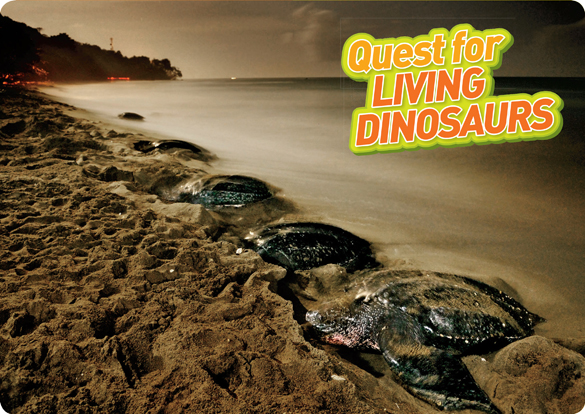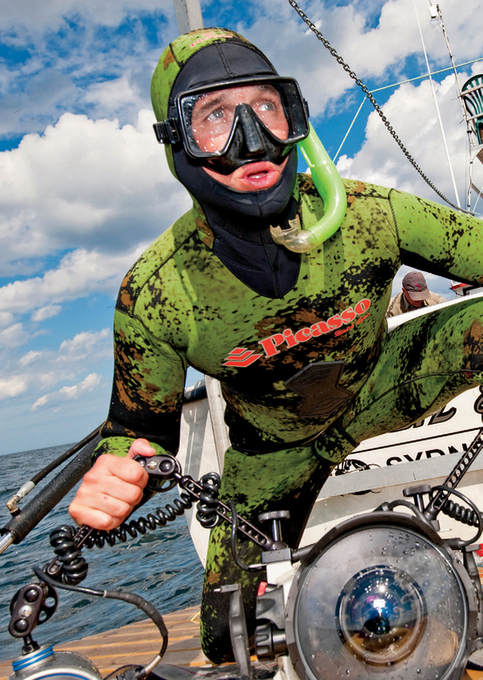Copyright 2014 National Geographic Society
All rights reserved. Reproduction of the whole or any part of the contents without written permission from the publisher is prohibited.
Published by the National Geographic Society
John M. Fahey, Chairman of the Board and Chief Executive Officer
Declan Moore, Executive Vice President; President, Publishing and Travel
Melina Gerosa Bellows, Publisher and Chief Creative Officer, Books, Kids, and Family
Prepared by the Book Division
Hector Sierra, Senior Vice President and General Manager
Nancy Laties Feresten, Senior Vice President, Kids Publishing and Media
Jennifer Emmett, Vice President, Editorial Director, Kids Books
Eva Absher-Schantz, Design Director, Kids Publishing and Media
Jay Sumner, Director of Photography, Kids Publishing
R. Gary Colbert, Production Director
Jennifer A. Thornton, Director of Managing Editorial
Staff for This Book
Becky Baines, Shelby Alinsky, Project Editors
Marf Ferguson Delano, Editor
Kelley Miller, Senior Photo Editor
Amanda Larsen, Art Director
Ruth Ann Thompson, Designer
Ariane Szu-Tu, Editorial Assistant
Callie Broaddus, Design Production Assistant
Margaret Leist, Illustrations Assistant
Grace Hill, Associate Managing Editor
Joan Gossett, Production Editor
Lewis R. Bassford, Production Manager
Susan Borke, Legal and Business Affairs
Production Services
Phillip L. Schlosser, Senior Vice President
Chris Brown, Vice President, NG Book Manufacturing
George Bounelis, Senior Production Manager
Nicole Elliott, Director of Production
Rachel Faulise, Manager
Robert L. Barr, Manager
 The National Geographic Society is one of the worlds largest nonprofit scientific and educational organizations. Founded in 1888 to increase and diffuse geographic knowledge, the Societys mission is to inspire people to care about the planet. It reaches more than 400 million people worldwide each month through its official journal, National Geographic, and other magazines; National Geographic Channel; television documentaries; music; radio; films; books; DVDs; maps; exhibitions; live events; school publishing programs; interactive media; and merchandise. National Geographic has funded more than 10,000 scientific research, conservation, and exploration projects and supports an education program promoting geographic literacy.
The National Geographic Society is one of the worlds largest nonprofit scientific and educational organizations. Founded in 1888 to increase and diffuse geographic knowledge, the Societys mission is to inspire people to care about the planet. It reaches more than 400 million people worldwide each month through its official journal, National Geographic, and other magazines; National Geographic Channel; television documentaries; music; radio; films; books; DVDs; maps; exhibitions; live events; school publishing programs; interactive media; and merchandise. National Geographic has funded more than 10,000 scientific research, conservation, and exploration projects and supports an education program promoting geographic literacy.
For more information, please visit
www.nationalgeographic.com,
call 1-800-NGS LINE (647-5463),
or write to the following address:
National Geographic Society, 1145 17th Street
N.W., Washington, D.C. 20036-4688 U.S.A.
Visit us online at
www.nationalgeographic.com/books
For librarians and teachers:
www.ngchildrensbooks.org
National Geographic supports K12 educators with ELA Common Core
Resources. Visit natgeoed.org/commoncore for more information.
More for kids from National Geographic:
kids.nationalgeographic.com
For rights or permissions inquiries, please contact National Geographic Books Subsidiary Rights:
Trade paperback ISBN:
978-1-4263-1520-6
Reinforced library edition ISBN:
978-1-4263-1521-3
eBook ISBN: 978-1-4263-1606-7
v3.1
Contents
Five female leatherback sea turtles scoot up onto the beach to lay their eggs.
This is me, photographer Brian Skerry, with my special underwater camera and lights. Im getting ready to dive.
I t was a warm night in May. I was walking along a beach in Trinidad (sounds like TRIH-nuh-dad), an island in the Caribbean (sounds like CARE-uh-BEE-un) Sea. It was almost midnight. The ocean waves rumbled and crashed onto the sand. Behind the beach, palm trees swayed in the damp breeze.
Suddenly, a few yards down, I spotted dark shapes on the sand.
Did You Know?
The temperature inside a leatherbacks nest determines if the baby turtles will be male or female.
They looked like huge rocks. But they were leatherback sea turtles! They were here to do something sea turtles have been doing for more than 100 million years. And I was hoping to shoot them. With my camera, that is!
My name is Brian Skerry. Im an underwater wildlife photographer. Its my job to take pictures of animals that live in the sea.
I fell in love with the sea when I was a child. I grew up in a small town in Massachusetts. We lived about an hours drive from the ocean. I was always asking my parents to take me there.
When I wasnt at the beach, I was reading books or watching TV shows about ocean life. I really admired the sea turtles. It was fun to imagine gliding with them through miles of deep, blue water.
When I was 15, I tried scuba diving. It was in my familys swimming pool. I was sitting in the shallow end. I had the scuba tank on my back. Hoses attached to the tank would bring air to my mouthpiece. Ill never forget putting that mouthpiece in and taking my first breath underwater. All I could think was, Wow! I have discovered a whole new world!
As I grew up, I practiced diving. I studied photography in college. I began taking underwater photos. Finally, I landed my dream job. I was hired to take photos for National Geographic magazine. And thats what brought me to Trinidad. I was there to photograph sea turtles for National Geographic.
Sea turtles are reptiles. Like all reptiles, they breathe air. But unlike most reptiles, sea turtles dont live on land. They spend nearly their entire lives in the ocean. Thats why theyre called marine reptiles.
One hundred million years ago, dinosaurs ruled the land. At that time, many types of marine reptiles lived in the oceans. Giant, long-necked plesiosaurs (sounds like PLEEZ-ee-oh-soars) and sharp-toothed ichthyosaurs (sounds like ICK-thee-oh-soars) swam the seas. Earths first sea turtles swam with them.
Dinosaurs died out 65 million years ago. Marine reptiles went extinct then, tooall of them except for sea turtles, that is.
Seven types of sea turtles are still around today. The leatherback is the largest of them all. Leatherbacks can grow to more than seven feet (2 m) long. They can weigh more than 2,000 pounds (900 kg).




 The National Geographic Society is one of the worlds largest nonprofit scientific and educational organizations. Founded in 1888 to increase and diffuse geographic knowledge, the Societys mission is to inspire people to care about the planet. It reaches more than 400 million people worldwide each month through its official journal, National Geographic, and other magazines; National Geographic Channel; television documentaries; music; radio; films; books; DVDs; maps; exhibitions; live events; school publishing programs; interactive media; and merchandise. National Geographic has funded more than 10,000 scientific research, conservation, and exploration projects and supports an education program promoting geographic literacy.
The National Geographic Society is one of the worlds largest nonprofit scientific and educational organizations. Founded in 1888 to increase and diffuse geographic knowledge, the Societys mission is to inspire people to care about the planet. It reaches more than 400 million people worldwide each month through its official journal, National Geographic, and other magazines; National Geographic Channel; television documentaries; music; radio; films; books; DVDs; maps; exhibitions; live events; school publishing programs; interactive media; and merchandise. National Geographic has funded more than 10,000 scientific research, conservation, and exploration projects and supports an education program promoting geographic literacy.

